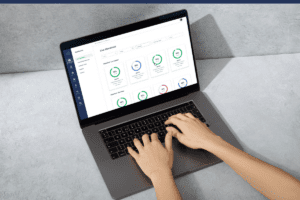Blended and distance learning programs helped vocational schools train essential workers throughout the pandemic, now many are looking to continue these programs.
When the pandemic first hit the U.S., many career education institutions were granted temporary approval to offer emergency distance learning and blended (a.k.a hybrid) learning courses. Now, almost a full year later, many of those institutions are looking to gain approval to permanently administer distance learning and/or blended courses.
Reading through the accrediting standards & criteria handbooks from major national accreditors, five common requirements stand out that institutions applying for permanent accreditation should make sure they have in place.
Note: these requirements are pulled from handbooks of national accreditors. Institutions must also meet the guidelines of their state boards.
1. Track measurable participation (credit or clock hour) in blended learning programs
Whether clock hour, credit hour, or competency based participation, interaction with the instructor must be validated by measurable participation. Participation can be measured by taking attendance or converting the completion of academic activities to clock hours accrued.
Deviation from established credit to clock hour conversions must be justified and validated by the institution. For hybrid/blended learning programs, institutions are required to outline and track the percentage of online activity compared to on-ground activity.
CourseKey allows students to securely check in and out of class and accrue hours in any learning environment, including online, in-person, and face to face. In addition, the conversion tool easily translates asynchronous activity into clock hours. For hybrid/blended learning in vocational schools, CourseKey also gives institutions the option to easily distinguish between hours students accrue online and in-person.
2. Document substantive instructor-student and student-student interaction
Accreditors, and Title 34 in the code of Federal Regulations, require that distance learning programs and courses in vocational schools must provide for timely and meaningful interaction between students and faculty, as well as between students and their peers. The quality of interaction needs to resemble the interaction found in residential (or on-ground) programs. Institutions must document the participation and interaction, typically using a running record or log of student activity.
CourseKey not only allows institutions to provide students with numerous opportunities to engage with their instructor and classmates during and after class, it tracks the activity of each student and makes it easy for administrators to document and analyze student engagement.
3. Demonstrate the resources and capacity to administer effective distance learning
Accreditors require that institutions demonstrate the capacity and infrastructure to support effective distance education. That includes instructional, human, and technological resources designed to sustain distance education operations and ensure faculty and student success.
CourseKey provides institutions with an online content repository where program directors can store and manage assessments. Program directors can ensure that every program is using the same content, creating consistency across campuses. Throughout the program, instructors push content to students instantly, creating a seamless learning experience for students in distance learning or blended courses.
4. Be able to prove the student enrolled is the one participating and receiving credit
Institutions seeking approval for continued distance education must have processes in place to determine that the student who registers for the course or program is the same student who participates in and completes the course and receives the academic credit. This can be verified using methods such as secure logins, passcodes, or proctored examinations.
CourseKey’s Face/Fingerprint ID capability ensures the student enrolled in the course is the student checking in and out of class. Additionally, instructors and/or program directors can require students to check in prior to completing an assignment or assessment, verifying that the correct student is doing the work.
5. Have at least one individual responsible for managing distance education activities
Each accrediting body requires that institutions designate a qualified person to oversee distance education activities, monitor student learning outcomes, and assess the effectiveness of the mode of delivery. Whether this individual works remotely or on site, evidence must be provided to show the extent and frequency of engagement.
Gain approval for continued distance and blended learning in vocational schools
Vocational schools that cover these five areas will be in much better positions to gain approval from accreditors for permanent distance learning and/or hybrid learning. With the help of a platform like CourseKey, institutions stay in compliance, handle audits with ease, and gain approval for distance and hybrid learning.
To learn more about how to monitor compliance at your institutions and improve your chances of approval for permanent distance and hybrid education, request a demo below.
Recent Articles

















